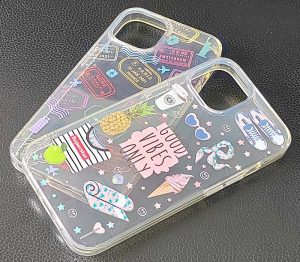IMD & IML process is becoming a most popular decoration in plastic injecting process.
Selecting the right plastic material for In-Mold Decoration (IMD) involves considering various factors to ensure optimal performance, appearance, and durability.
Sunwaytc give you a step-by-step guide to help you choose the appropriate plastic material for the IMD process:
1. Understand the Requirements of the Application
 Durability: Consider the mechanical strength, impact resistance, and wear resistance required.
Durability: Consider the mechanical strength, impact resistance, and wear resistance required.
Thermal Stability: Determine the operating temperature range and thermal cycling conditions.
Chemical Resistance: Identify exposure to chemicals, solvents, and cleaning agents.
Aesthetic Needs: Ensure the material supports the desired finish, color, and transparency/opaqueness.
2. Material Compatibility with IMD Process
Adhesion: The plastic must have good adhesion properties with the IMD film or label. Poor adhesion can result in delamination or peeling.
Flow Characteristics: Evaluate the melt flow index of the plastic. Materials with suitable flow properties ensure proper filling of molds and encapsulation of the decoration.
Shrinkage: Consider materials with low and consistent shrinkage to maintain dimensional stability and avoid warping or deformation.
3. Common Plastics Used in IMD
Polycarbonate (PC): Excellent transparency, high impact resistance, good heat resistance, and dimensional stability. Commonly used for high-quality, durable applications.
Commonly used for high-quality, durable applications.
Acrylonitrile Butadiene Styrene (ABS): Good impact resistance, toughness, and surface finish. Often used for consumer electronics and automotive interiors.
Polycarbonate/ABS Blends (PC/ABS): Combines the benefits of both PC and ABS, offering a balance of strength, impact resistance, and processability.
Polypropylene (PP): Good chemical resistance, low cost, and suitable for less demanding applications. Often used in automotive and packaging.
Polyethylene Terephthalate (PET): Good clarity, chemical resistance, and barrier properties. Suitable for food and beverage packaging.
Thermoplastic Polyurethane (TPU): High elasticity, transparency, and abrasion resistance. Used for applications requiring flexibility and durability.
4. Considerations for Specific Applications
Automotive: High impact resistance, thermal stability, and UV resistance. Materials like PC, PC/ABS, and ABS are preferred.
Consumer Electronics: Good surface finish, durability, and dimensional stability. Materials like PC and ABS are common.
Packaging: Chemical resistance, clarity, and barrier properties. Materials like PET and PP are often used.
5. Testing and Validation
Prototyping: Conduct prototyping to test the material’s performance with the IMD process.
Environmental Testing: Evaluate the material under various environmental conditions (temperature, humidity, UV exposure) to ensure long-term stability.
Adhesion Testing: Perform peel tests and adhesion tests to ensure the IMD film adheres well to the plastic substrate.
6. Regulatory and Safety Considerations
Ensure compliance with relevant industry standards and regulations, such as RoHS, REACH, FDA (for food contact materials), and automotive standards.
Consider biocompatibility if the product is intended for medical applications.
Conclusion
Selecting the right plastic material for the IMD process involves balancing mechanical, thermal, and chemical properties with the aesthetic and functional requirements of the end application. By carefully evaluating these factors and conducting thorough testing, you can ensure the selected material will perform optimally in your specific IMD application.
